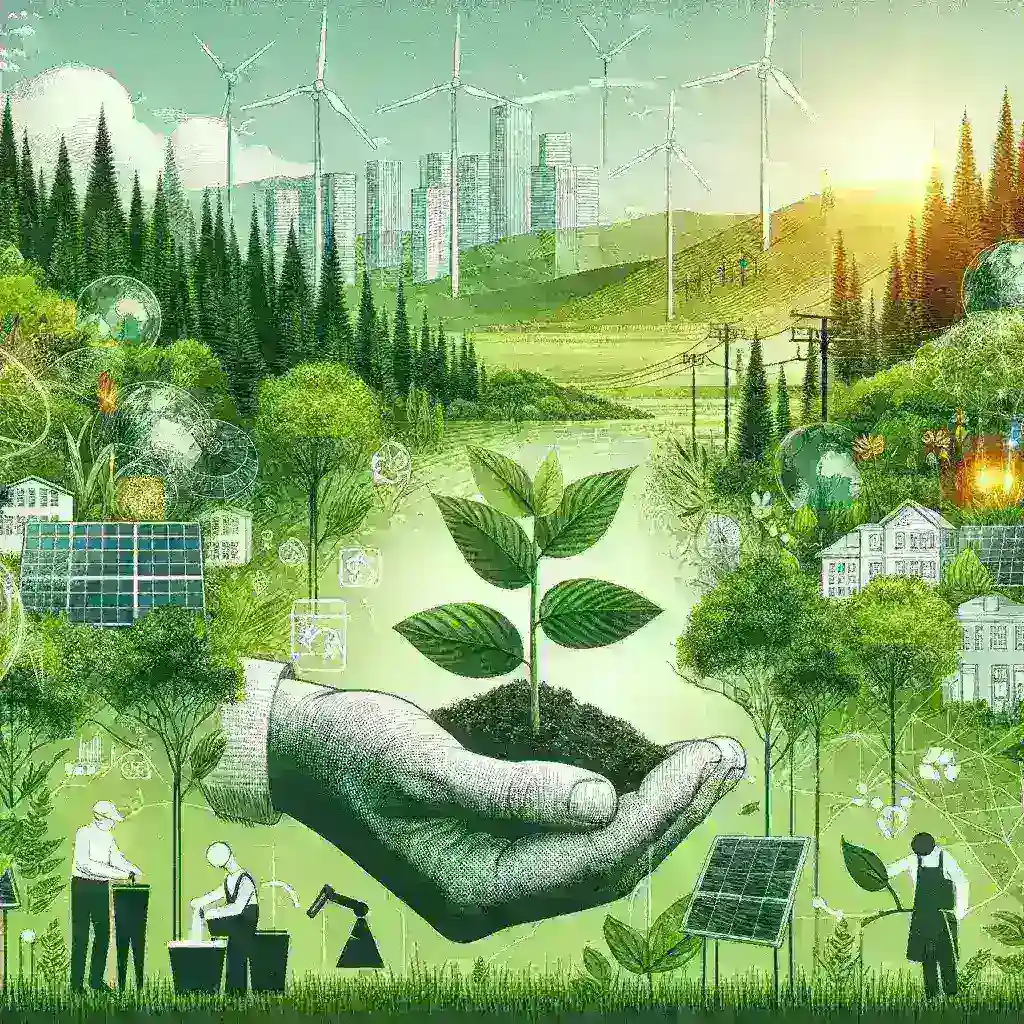Introduction
In an era where environmental concerns are at the forefront of global discussions, the need for sustainable practices has never been more crucial. Integrated Resource Management (IRM) emerges as a powerful framework that facilitates the achievement of green goals, which prioritize ecological health, social equity, and economic viability. In this article, we will delve into how IRM supports these green objectives through innovative strategies and collaborative efforts.
Understanding Integrated Resource Management
Integrated Resource Management is a holistic approach that considers the interplay among various resources—such as water, energy, land, and waste—aiming to optimize their use while minimizing environmental impacts. Unlike traditional resource management methods, which often compartmentalize resources, IRM seeks to integrate them into a cohesive strategy that enhances sustainability.
The Historical Context of IRM
The concept of integrated resource management has evolved over several decades. Initially rooted in environmental management practices of the 1970s and 1980s, IRM gained momentum as global challenges like climate change, urbanization, and resource depletion became apparent. Policymakers began to recognize the need for a more interconnected approach to resource management, leading to the emergence of IRM as a structured methodology.
Key Principles of Integrated Resource Management
- Inclusivity: Engaging all stakeholders—governments, businesses, communities, and individuals—in the decision-making process ensures that diverse perspectives are considered.
- Sustainability: Prioritizing long-term environmental health over short-term gains, IRM promotes practices that do not deplete natural resources for future generations.
- Efficiency: By optimizing resource use, IRM minimizes waste and reduces costs, leading to more efficient systems.
- Adaptability: IRM frameworks are designed to be flexible, allowing for adjustments based on changing environmental conditions or community needs.
How IRM Supports Green Goals
1. Promoting Sustainable Resource Use
IRM emphasizes the sustainable use of resources, ensuring that activities such as agriculture, forestry, and fishing do not lead to long-term ecological harm. For instance, implementing crop rotation and organic farming techniques can enhance soil health and reduce reliance on chemical fertilizers.
2. Facilitating Renewable Energy Integration
As the world shifts towards renewable energy sources, IRM plays a vital role in integrating these technologies into existing infrastructures. By coordinating efforts between energy providers, local governments, and communities, IRM can support the development of solar, wind, and other renewable energy projects while minimizing land-use conflicts.
3. Enhancing Water Management
Water scarcity is a pressing issue in many regions. IRM addresses this challenge by promoting efficient water use practices and technologies. Through rainwater harvesting, wastewater recycling, and efficient irrigation systems, IRM helps conserve water resources while supporting agricultural and urban needs.
4. Waste Reduction and Circular Economy
Integrated Resource Management encourages the transition from a linear economy—where resources are used and discarded—to a circular economy that emphasizes recycling, reuse, and sustainable production. By developing waste management strategies that incorporate recycling and upcycling, communities can significantly reduce their environmental footprint.
5. Building Resilience Against Climate Change
IRM fosters resilience by promoting practices that mitigate the impacts of climate change. For example, restoring wetlands not only improves biodiversity but also acts as a natural buffer against flooding and erosion. Such initiatives contribute to both environmental health and community safety.
Challenges and Considerations
While the benefits of Integrated Resource Management are clear, several challenges must be addressed for effective implementation:
- Resource Conflicts: Competing interests among stakeholders can hinder integrated approaches. Facilitating communication and collaboration is essential.
- Data Availability: Effective IRM requires comprehensive data on resource availability and usage. Investments in data collection and monitoring systems are crucial.
- Policy Alignment: Ensuring that policies across different sectors align with IRM principles can be a complex endeavor, necessitating coordinated efforts among various governmental agencies.
Future Predictions for IRM
The future of Integrated Resource Management looks promising as awareness of sustainability grows. Emerging technologies, such as the Internet of Things (IoT) and artificial intelligence (AI), are expected to play significant roles in optimizing resource management. These tools can provide real-time data analytics and predictive modeling, enabling proactive decision-making.
Real-Life Examples of Successful IRM
Several regions have successfully implemented IRM strategies:
Case Study 1: Singapore
Singapore has become a global leader in urban sustainability through its Integrated Drainage Management (IDM) approach. This strategy incorporates stormwater management, green infrastructure, and urban planning to mitigate flooding while enhancing the urban landscape.
Case Study 2: Australia
The implementation of Integrated Water Resource Management (IWRM) in Australia has led to improved water security and quality across several states. By involving stakeholders at all levels, Australia has successfully tackled water scarcity issues while promoting ecosystem health.
Cultural Relevance of IRM
Different cultures have historically practiced forms of integrated resource management. Indigenous communities around the world have long understood the importance of sustainable practices in maintaining the balance of natural ecosystems. Recognizing and incorporating these traditional knowledge systems into modern IRM approaches can enhance effectiveness and foster greater community engagement.
Conclusion
Integrated Resource Management is a vital framework for achieving green goals in our rapidly changing world. By promoting sustainable practices, enhancing resource efficiency, and encouraging collaboration among diverse stakeholders, IRM paves the way for a healthier planet. As we continue to face environmental challenges, embracing IRM will be essential for ensuring a sustainable future for generations to come.











